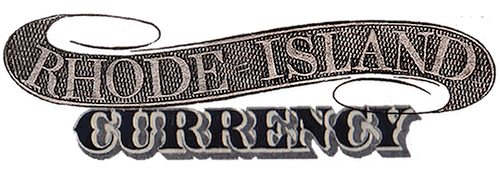Arcade Bank, Providence
The Arcade Building on Westminster Street in Providence was built in 1828 by architects Russell Warren and James Bucklin in the Greek temple style. It was the first enclosed shopping center in the United States and, despite its occupancy and financial problems, has long stood as an important part of Rhode Island’s rich architectural heritage.
The bank that bears this structure’s name was incorporated only three years after the Arcade’s construction. Much of the obsolete currency issued by this institution displays either its front or back façade. The northern side on Westminster Street features a simple pediment while the southern end is topped with a horizontal entablature. (For example, the first $3 note below is the Weybosset side, while the $3 that follows shows the Westminster Street entrance with its triangular front.)
A 19th century history provides more specifics on the bank:
“The Arcade Bank, at first located at No. 30, in the second story of the Arcade Building, was incorporated in June, 1831. Among its prominent incorporators were Earl P. Mason and George B. Holmes. Successive presidents were: Stephen Waterman, up to about 1843; Paris Hill succeeded, continuing until 1855; Earl P. Mason, 1855 to 1877; Henry Lippitt, 1877 to the present time. Its cashiers were: Joseph Hodges, to 1850; Benjamin W. Ham, about 1851 to 1858; Manton E. Hoard, 1858 to 1872; Stephen H. Tabor, 1872 to 1886; Frank A. Chase, 1887 to the present time. The bank was reorganized as the Rhode Island National Bank in March, 1865. As the Arcade Bank, its capital at first was $200,000; about 1846 it was increased to $500,000, and some five years later this sum was doubled; but some ten years later its actual capital was reported at $396,000.
“In the meantime the bank moved from its original location; first to No. 3 Washington Building, and about 1853 to the second floor of 56 Broad street. About 1858 its number was 56 Weybosset, where it continued until 1867, when it removed to No. 70 Weybosset. Thence it removed in 1881 to 19 and 21 Custom House street, its present location. With its reorganization its capital was fixed at $600,000, and at that figure it has since remained, though a surplus has been growing for several years, which now amounts to $170,000. The present directors are: Henry Lippitt, Benjamin F. Thurston, W. W. Hoppin, E. Philip Mason, S. S. Sprague, William T. Nicholson, F. A. Chase, John McAuslan, Charles Fletcher and William A. Leete. “ — Richard M. Bayles, ed. History of Providence County, Rhode Island, Volume I. New York: W. W. Preston, 1891.
According to Roger Durand’s Obsolete Notes and Scrip of Rhode Island and the Providence Plantations, the Arcade Bank was one of President Andrew Jackson’s “pet banks” and thrived due to its political connections. In 1865, it became the Rhode Island National Bank (charter #983). That institution was liquidated in 1901 as part of the creation, along with three other local banks, of the United National Bank of Providence.
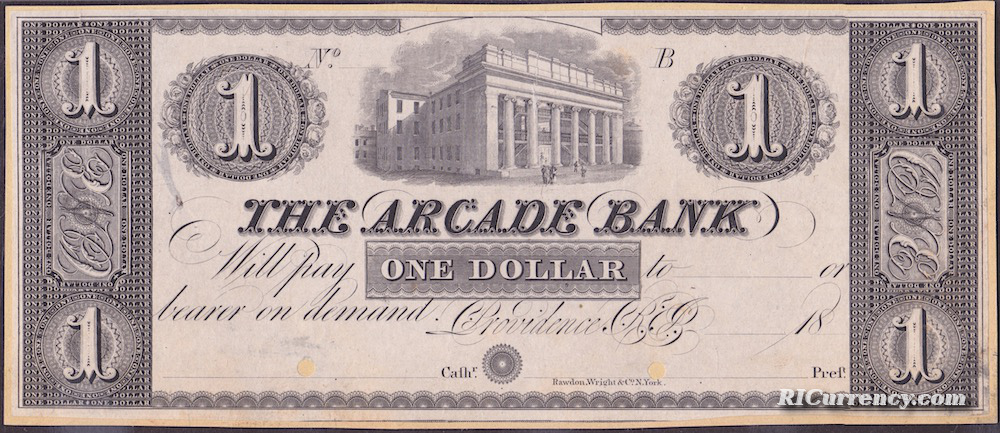
1830s-40s Proof. Durand 948. Haxby RI-245 G4P ppB


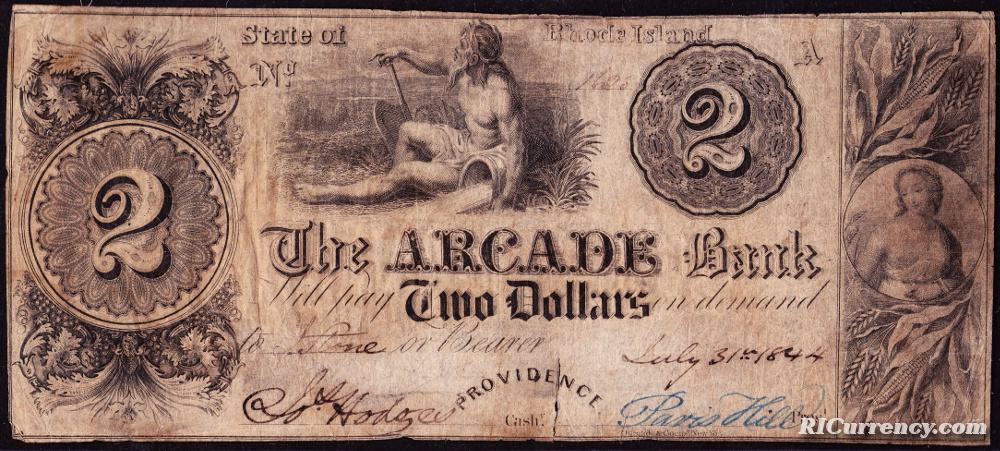

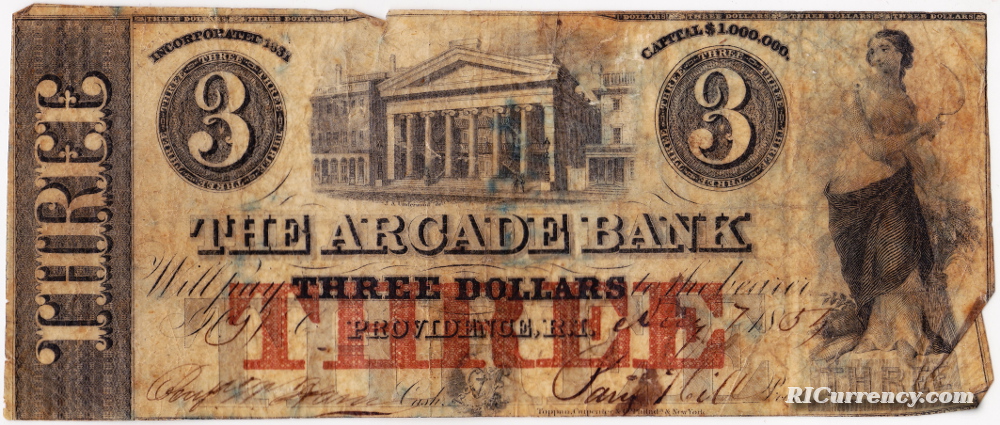
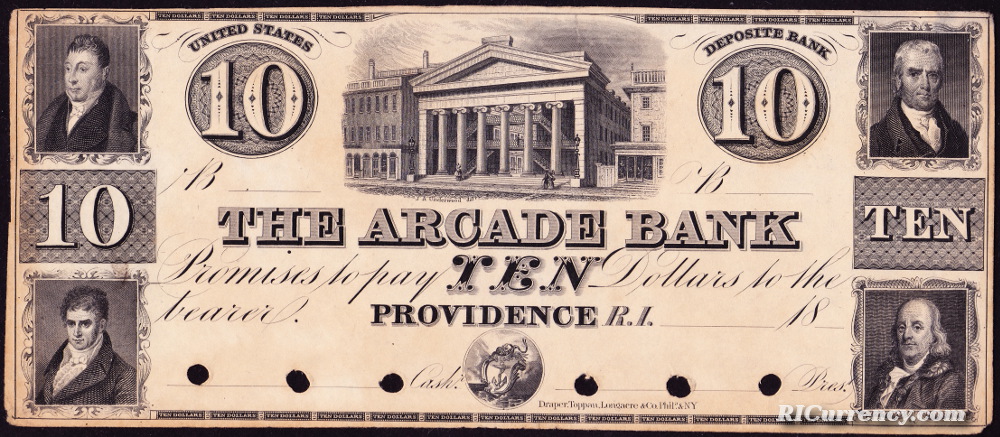
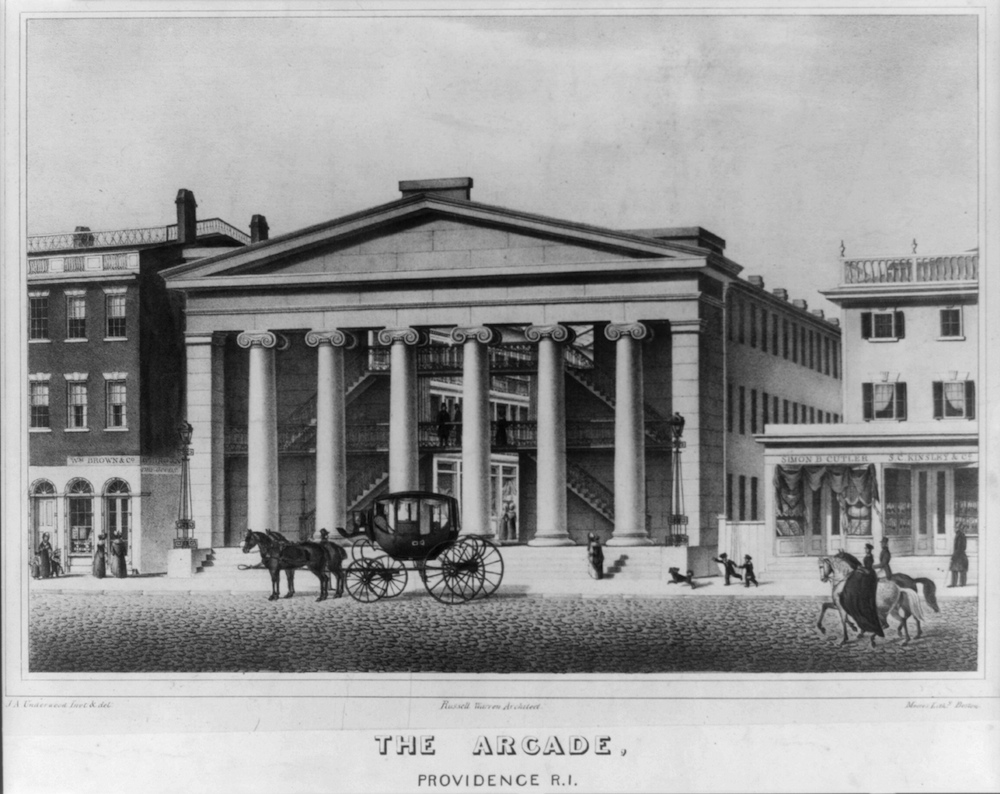
An early engraving of the Westminster side of the Arcade. (Source: Library of Congress.)
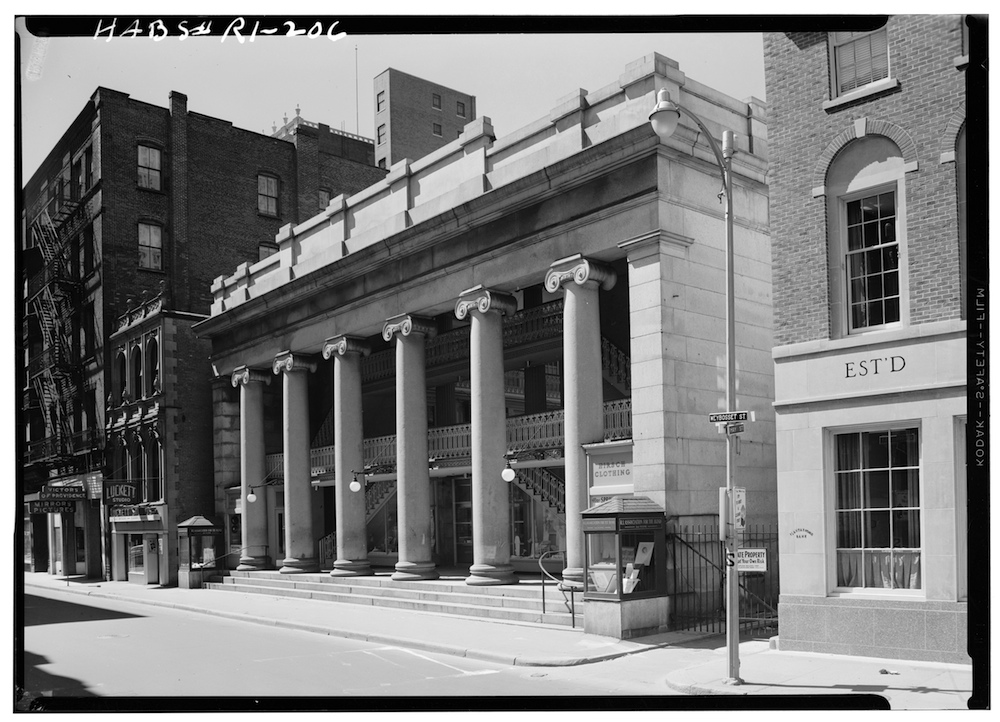
Weybosset Street southeast view, 1958. (Source: Library of Congress.)
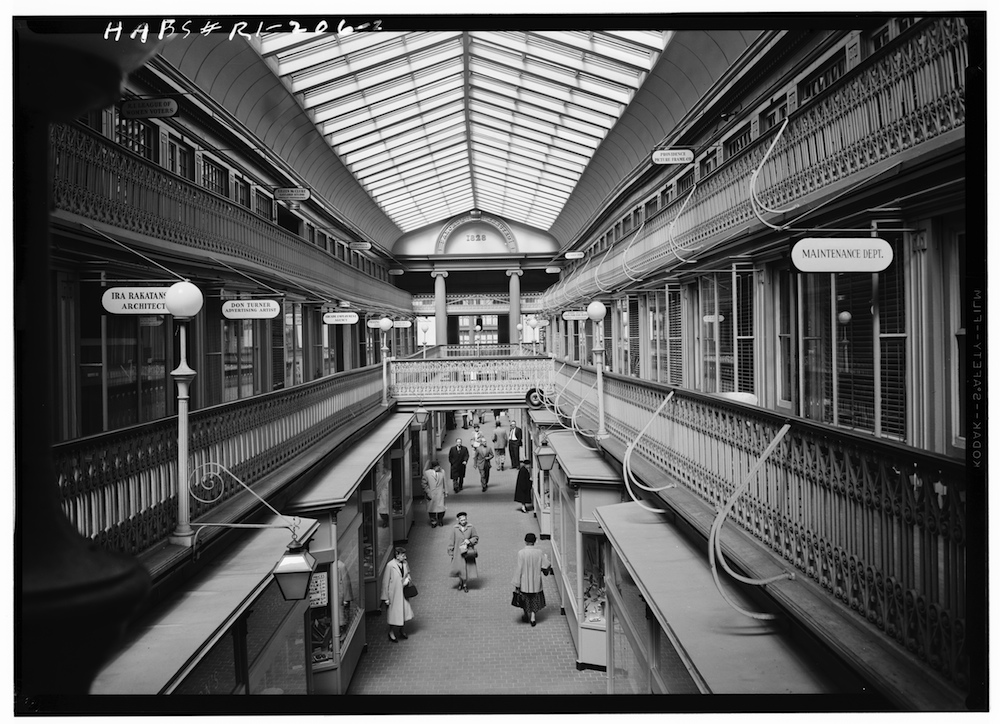
Interior of the Arcade, 1958. (Source: Library of Congress.)
